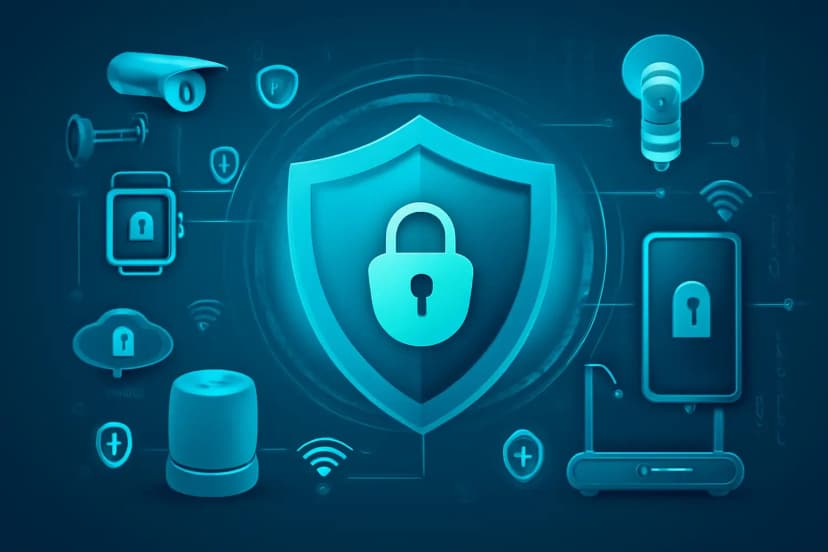Introduction
With the rapid adoption of IoT devices in smart homes, healthcare, industrial systems, and more, security has become a critical concern. IoT devices often handle sensitive data and are connected to complex networks, making them potential targets for cyberattacks. IoT security validation ensures that devices are protected from hacks, data breaches, and unauthorized access. This blog explores advanced security testing techniques for IoT devices, focusing on encryption, access control, and penetration testing.
What is IoT Security Validation?
IoT security validation is the process of testing the security measures of IoT devices to ensure they are robust against cyber threats. This includes evaluating encryption, authentication, access control, and communication protocols. The goal is to identify vulnerabilities before they can be exploited and to ensure compliance with industry security standards.
Why IoT Security Validation Matters
- Protect Sensitive Data: IoT devices often collect personal, financial, or operational data. Security validation ensures that this data is stored and transmitted securely.
- Prevent Unauthorized Access: Testing access controls and authentication mechanisms prevents unauthorized users from controlling devices or accessing sensitive information.
- Ensure Device Integrity: Security validation ensures devices operate as intended, even under attempted cyberattacks, protecting system functionality.
- Regulatory Compliance: IoT security validation helps meet industry regulations such as GDPR, HIPAA, or ISO/IEC 27001, depending on device use.
- Maintain Trust: Users trust that their devices and data are secure. Validating security safeguards this trust and enhances adoption.
Key Areas of IoT Security Validation
- Penetration Testing
- Simulate real-world cyberattacks to identify vulnerabilities.
- Test both device firmware and network communication.
- Evaluate how well devices resist attacks like brute force, malware injection, or unauthorized access attempts.
- Simulate real-world cyberattacks to identify vulnerabilities.
- Encryption Testing
- Verify that sensitive data is encrypted both at rest and during transmission.
- Test the strength of encryption algorithms used for data protection.
- Verify that sensitive data is encrypted both at rest and during transmission.
- Access Control Testing
- Ensure proper authentication and authorization mechanisms are in place.
- Test role-based access, password policies, multi-factor authentication, and session management.
- Ensure proper authentication and authorization mechanisms are in place.
- Firmware and Software Security
- Validate firmware integrity and update mechanisms.
- Ensure software updates are secure and cannot be exploited to inject malicious code.
- Validate firmware integrity and update mechanisms.
- Network Security Testing
- Test communication protocols (Wi-Fi, Bluetooth, Zigbee, MQTT) for vulnerabilities.
- Ensure data is protected against interception, spoofing, or man-in-the-middle attacks.
- Test communication protocols (Wi-Fi, Bluetooth, Zigbee, MQTT) for vulnerabilities.
- Data Privacy Testing
- Ensure that IoT devices comply with data privacy regulations.
- Validate that sensitive information is not leaked and is only accessible to authorized users.
- Ensure that IoT devices comply with data privacy regulations.
Common Challenges in IoT Security Validation
- Diverse Device Ecosystems: Testing multiple devices with different capabilities, protocols, and operating systems can be complex.
- Rapid Deployment: IoT devices are often deployed quickly, making thorough security validation challenging.
- Connectivity Issues: Devices that communicate over unstable networks may expose additional security vulnerabilities.
- Balancing Security and Performance: Security measures like encryption and authentication can impact device performance; optimization is critical.
Conclusion
IoT security validation is essential to protect devices and users from cyber threats. By performing penetration testing, encryption validation, access control checks, and network security assessments, developers can identify vulnerabilities and ensure that IoT devices operate securely. Robust security validation builds trust, maintains compliance, and safeguards both data and device functionality.
FAQs
- What is IoT security validation?
- Testing IoT devices for vulnerabilities, ensuring data protection, authentication, and compliance with security standards.
- Testing IoT devices for vulnerabilities, ensuring data protection, authentication, and compliance with security standards.
- Why is penetration testing important for IoT devices?
- It identifies potential attack vectors and ensures devices can withstand real-world cyber threats.
- It identifies potential attack vectors and ensures devices can withstand real-world cyber threats.
- How do you test access control in IoT devices?
- By validating authentication mechanisms, role-based access, multi-factor authentication, and session management.
- By validating authentication mechanisms, role-based access, multi-factor authentication, and session management.
- What protocols are commonly tested for IoT security?
- Wi-Fi, Bluetooth, Zigbee, MQTT, and other IoT communication protocols.
- Wi-Fi, Bluetooth, Zigbee, MQTT, and other IoT communication protocols.
- How does IoT security validation protect user data?
- It ensures data is encrypted, access is restricted, and sensitive information is not leaked or compromised.
About Jayesh Mistry
Expert in Iot Appliances & App Testing Service with years of experience in software testing and quality assurance.
Found this article helpful?
Share it with your team!
